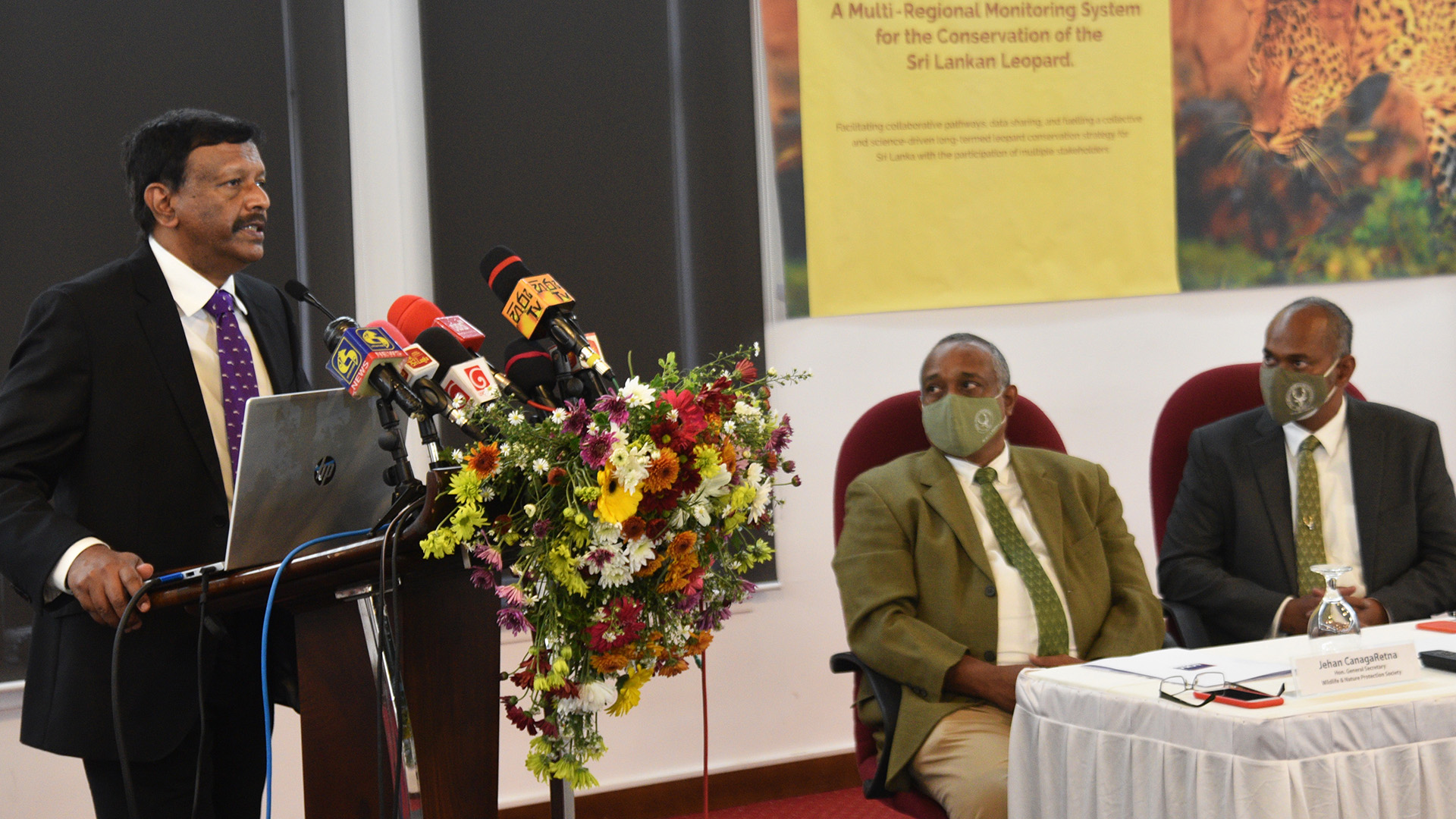WNPS Partners LOLC to Establish a Multi-Regional Monitoring System for the Conservation of the Sri Lankan Leopard
February 21 st 2022 (COLOMBO) The Sri Lankan leopard (Panthera pardus kotiya) is the largest of the four wild cat species found in Sri Lanka, and the apex mammalian predator on the island. The sub-species of this charismatic animal is endemic to Sri Lanka and widely distributed across the island’s dry zones and low country wet zones with habitats ranging to the cloud forests of the highest elevations in the hill country. It is believed that there are less than 1000 leopards roaming in the wild within the island. Further, the leopard is threatened globally by habitat loss and illegal wildlife trade, while in the human-dominated land-use areas in Sri Lanka, the impacts of habitat loss prevail critically.. To initiate and sustain a science-based conservation strategy it is imperative to further understand the distribution and the ecology of the Sri Lankan leopard, specially, in under-studied areas nationwide.
In addressing this knowledge gap, the Wildlife and Nature Protection Society (WNPS) will partner with LOLC Holdings PLC, Sri Lanka’s leading and largest diversified conglomerate to establish a network of specialized leopard conservation locations and research centers across identified geographically important areas, within Sri Lanka. These Research Centres will focus on understanding the species function in populations or meta-populations that exist at much larger scales than individual management units, at a regional level. Through this initiative, the WNPS hopes to create common knowledge and data-sharing platform to drive a research-based island-wide leopard monitoring programme. Through the establishment of these Research Centres nationwide, smaller monitoring efforts will be easily integrated into larger programs and databases. It will enable scientists and conservationists access to deeper and wider sets of data to understand local leopard populations, regionally and countrywide.
In the initial phase, six research stations will be set up in identified locations across Okanda or Panama, Morningside, Killinochchi, Belihuloya, Maskeliya or Nallathaniya, Sigiriya or Ritigala. The Project will monitor the presence of leopards in selected geographical areas, using camera traps and surveys. The Research Centres will liaise with local wildlife and forest officers, and also serve as educational hubs to generate awareness amongst the local communities, including knowledge dissemination and generating research-based human-leopard conflict mitigation measures. This is timely and critical, in addressing the increasing number of leopard deaths in Sri Lanka, predominantly through snares set up in a human-dominated landscape.
The Project will provide a critical context for the management and conservation of the Sri Lankan leopard, currently listed as Vulnerable on the IUCN Red List. Recent research has shown that leopard habitat suitability in Sri Lanka is heavily influenced by forest cover, patch size, connectivity, and the level of protection of the landscape, a critical requirement to conserve the island’s biodiversity.
“As the Sri Lankan leopard is the largest predator in our ecosystem, it is important that we know the current position related to its habitat, the threats faced by it etc. Hence, it is vital to do a more coordinated island-wide data collection effort to mitigate any conflicts or issues faced by this predator” said Mr. Kapila Jayawardena, Group Managing Director/CEO of the LOLC Group. “To this end, we are pleased to step forward and join hands with the WNPS to support them in this endeavour, which will enable them to make informed decisions to protect this endemic species” he went on to state.
“Multi-stakeholder partnerships play a key role in influencing the course of conservation. For lasting impacts, a range of extraordinary partners, including governments, local communities, businesses, scientists, academics, and individuals must collaborate. We are happy that the Sri Lanka’s largest Business and most diversified Business Group has partnered with us for a 5-year project. The WNPS will bring the wild cat research community to work together and share the finding for a collective conservation effort” said Spencer Manuelpillai, the President of the WNPS.
Speaking further Prof Enoka Kudavidanage said "The Sri Lankan Leopard is threatened byour unplanned land use, intentional wildlife crimes, lack of awareness, economic intentions especially in the tourism sector with minimum respect for wildlife, obstacles for enforcing adequate penalties for wildlife crimes, limited understanding of its ecology and resource requirements, and finally the delay in translating knowledge into action. I am hoping that this initiative by the WNPS and LOLC Holdings will assist to combine findings of the past and the ongoing research and conservation measures, identify the data gaps, addressing them through collaborative pathways, facilitate data sharing, and fueling a collective and science-driven long-termed leopard conservation strategy for Sri Lanka with the participation of multiple stakeholders. The project will benefit from the knowledge, of all researchers studying leopards in Sri Lanka, of those who are actively working for the conservation of this Charismatic animal, and of those who are willing to initiate new research in data deficient areas, as our ultimate objective is to ensure the existence of healthy populations of leopards in Sri Lanka”


